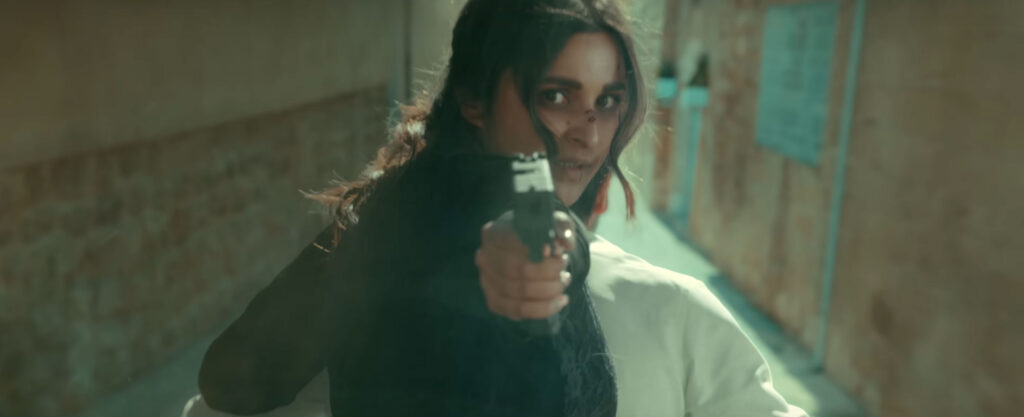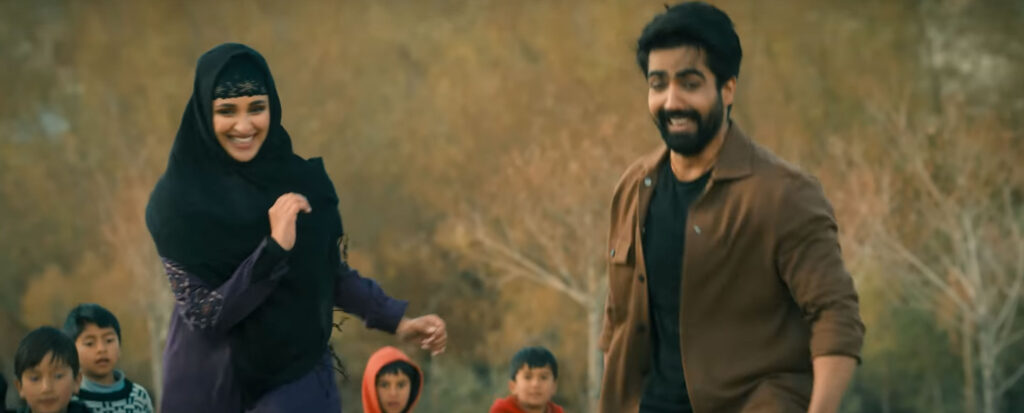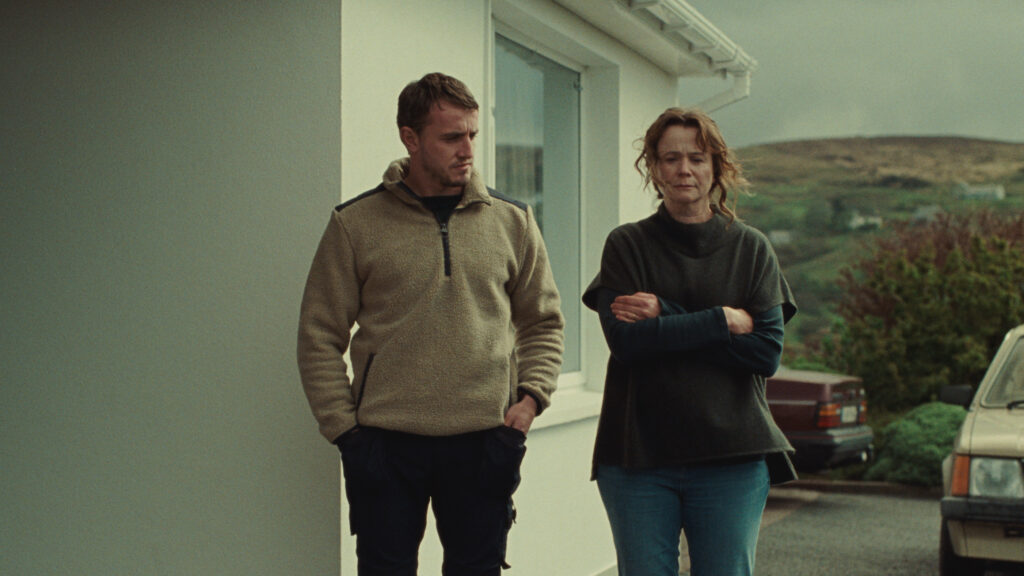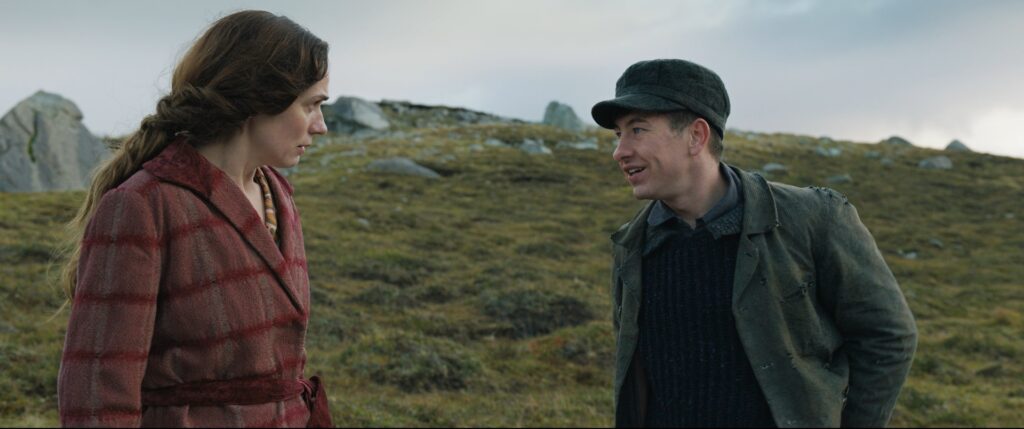October 26, 2022

The following is a press release from E! and NBC:
[Editor’s note: Harry Styles is the top nominee, with six nominations. A complete list of nominations is at the end of the article.]
Today, NBC and E! announced the host and commencement of voting for the 2022 “People’s Choice Awards,” celebrating all forms of entertainment, chosen entirely by the people. Actor, comedian and “People’s Choice Awards” nominee Kenan Thompson will return to host the annual ceremony for the second consecutive year. Voting is now open and fans worldwide can vote for their favorite nominee in each of the 40 categories representing movies, television, music and pop culture. The 2022 “People’s Choice Awards” will air simultaneously on NBC and E! on Tuesday, December 6 at 9:00pm ET/PT from the Barker Hangar in Santa Monica, CA. “Live from E!: The 2022 People’s Choice Awards” will kick off the night with a red carpet special at 7:00pm ET/PT on E!.
“I’m beyond excited to host the People’s Choice Awards again this year and celebrate the incredible talent and fans that this show unites,” says Kenan Thompson. “I’m so grateful to be nominated – shoutout to the fans and congrats to all the nominees. Get ready for round two!!”
“Last year, Kenan brought an irreplaceable energy to the ‘People’s Choice Awards.’ His enthusiasm and passion for pop culture and the fans was palpable and translated in the room and on-screen,” said Cassandra Tryon, SVP, Entertainment Live Events, NBCUniversal Television and Streaming. “We can’t wait to welcome Kenan back and see what he has up his sleeve for this year’s show.”
This year, Thompson is nominated in the comedy TV Star category for “Saturday Night Live.” Thompson is an award-winning actor, comedian and producer best known for his work on “SNL” where he is currently in his 20th season as the longest-running cast member. A six-time Emmy Award nominee, Thompson has received four nominations for his acting work and won the Emmy for Outstanding Original Music and Lyrics in 2018 for the “SNL” song “Come Back, Barack.” For two seasons, Thompson executive produced and starred as the title character in the NBC comedy series “Kenan.” Thompson hosted the 74th Primetime Emmy Awards in 2022 and was honored with a star on the Hollywood Walk of Fame.
“People’s Choice Awards” and “Live from E!: The 2022 People’s Choice Awards” are both produced by Den of Thieves with Executive Producers Jesse Ignjatovic, Evan Prager and Barb Bialkowski.
Voting for the 2022 “People’s Choice Awards” runs today through Wednesday, November 9 at 11:59pm ET. Fans can either vote online at www.votepca.com or on Twitter. Additionally, votes cast on Turbo Tuesday, November 1 will count twice, equaling up to a maximum of 50 votes per day, per category, per voting method.
Voting Methods:
Online – www.votepca.com
Twitter – Fans can send a public tweet or retweet and include one category hashtag and one corresponding nominee hashtag.
*Votes will be aggregated and counted through our third-party vendor Telescope.
See the full list of all 40 categories and nominees online at: https://www.eonline.com/news/1351289/2022-peoples-choice-awards-complete-list-of-nominees
Complete rules can be found at: https://votepca.com/rules
Complete list of category and nominee hashtags can be found at: https://votepca.com/faqs
Kenan Thompson is represented by UTA, Michael Goldman, and Del Shaw Moonves Tanaka Finkelstein Lezcano Bobb & Dang.
The following is a complete list of nominations for the 2022 People’s Choice Awards:
THE MOVIE OF 2022
Bullet Train
Doctor Strange in the Multiverse of Madness
Elvis
Jurassic World Dominion
Nope
The Batman
Thor: Love and Thunder
Top Gun: Maverick
THE COMEDY MOVIE OF 2022
Fire Island
Hustle
Hocus Pocus 2
Marry Me
Senior Year
The Adam Project
The Lost City
Ticket To Paradise
THE ACTION MOVIE OF 2022
Black Adam
Bullet Train
Doctor Strange in the Multiverse of Madness
Jurassic World Dominion
The Batman
The Woman King
Thor: Love and Thunder
Top Gun: Maverick
THE DRAMA MOVIE OF 2022
Nope
Death on the Nile
Don’t Worry Darling
Elvis
Halloween Ends
Luckiest Girl Alive
Scream
Where the Crawdads Sing
THE MALE MOVIE STAR OF 2022
Brad Pitt, Bullet Train
Chris Hemsworth, Thor: Love and Thunder
Chris Pratt, Jurassic World Dominion
Daniel Kaluuya, Nope
Dwayne Johnson, Black Adam
Miles Teller, Top Gun: Maverick
Ryan Reynolds, The Adam Project
Tom Cruise, Top Gun: Maverick
THE FEMALE MOVIE STAR OF 2022
Elizabeth Olsen, Doctor Strange in the Multiverse of Madness
Gal Gadot, Death on the Nile
Jennifer Garner, The Adam Project
Jennifer Lopez, Marry Me
Joey King, Bullet Train
Keke Palmer, Nope
Queen Latifah, Hustle
Viola Davis, The Woman King
THE DRAMA MOVIE STAR OF 2022
Austin Butler, Elvis
Daniel Kaluuya, Nope
Florence Pugh, Don’t Worry Darling
Gal Gadot, Death on the Nile
Harry Styles, Don’t Worry Darling
Jamie Lee Curtis, Halloween Ends
Keke Palmer, Nope
Mila Kunis, Luckiest Girl Alive
THE COMEDY MOVIE STAR OF 2022
Adam Sandler, Hustle
Channing Tatum, The Lost City
Jennifer Garner, The Adam Project
Jennifer Lopez, Marry Me
Julia Roberts, Ticket To Paradise
Queen Latifah, Hustle
Ryan Reynolds, The Adam Project
Sandra Bullock, The Lost City
THE ACTION MOVIE STAR OF 2022
Chris Hemsworth, Thor: Love and Thunder
Chris Pratt, Jurassic World Dominion
Dwayne Johnson, Black Adam
Elizabeth Olsen, Doctor Strange in the Multiverse of Madness
Joey King, Bullet Train
Tom Cruise, Top Gun: Maverick
Viola Davis, The Woman King
Zöe Kravitz, The Batman
THE SHOW OF 2022
Abbott Elementary
Better Call Saul
Grey’s Anatomy
House of the Dragon
Obi-Wan Kenobi
Saturday Night Live
Stranger Things
This Is Us
THE DRAMA SHOW OF 2022
Better Call Saul
Cobra Kai
Euphoria
Grey’s Anatomy
Law & Order: Special Victims Unit
Ozark
The Walking Dead
This Is Us
THE COMEDY SHOW OF 2022
Abbott Elementary
Black-ish
Only Murders in the Building
Never Have I Ever
Saturday Night Live
The Woman in the House Across the Street from the Girl in the Window
Young Rock
Young Sheldon
THE REALITY SHOW OF 2022
90 Day Fiancé: Before the 90 Days
Below Deck Sailing Yacht
Jersey Shore: Family Vacation
Love & Hip Hop: Atlanta
The Kardashians
The Real Housewives of Atlanta
The Real Housewives of Beverly Hills
Selling Sunset
THE COMPETITION SHOW OF 2022
America’s Got Talent
American Idol
Dancing with the Stars
RuPaul’s Drag Race
The Bachelorette
The Masked Singer
Lizzo’s Watch Out for the Big Grrrls
The Voice
THE MALE TV STAR OF 2022
Dwayne Johnson, Young Rock
Ewan McGregor, Obi-Wan Kenobi
Ice-T, Law & Order: Special Victims Unit
Jason Bateman, Ozark
Noah Schnapp, Stranger Things
Norman Reedus, The Walking Dead
Oscar Isaac, Moon Knight
Sterling K. Brown, This Is Us
THE FEMALE TV STAR OF 2022
Millie Bobby Brown, Stranger Things
Ellen Pompeo, Grey’s Anatomy
Kristen Bell, The Woman in the House Across the Street from the Girl in the
Window
Maitreyi Ramakrishnan, Never Have I Ever
Mandy Moore, This Is Us
Mariska Hargitay, Law & Order: Special Victims Unit
Quinta Brunson, Abbott Elementary
Selena Gomez, Only Murders in the Building
THE DRAMA TV STAR OF 2022
Ellen Pompeo, Grey’s Anatomy
Jason Bateman, Ozark
Mandy Moore, This Is Us
Mariska Hargitay, Law & Order: Special Victims Unit
Norman Reedus, The Walking Dead
Sterling K. Brown, This Is Us
Sydney Sweeney, Euphoria
Zendaya, Euphoria
THE COMEDY TV STAR OF 2022
Bowen Yang, Saturday Night Live
Dwayne Johnson, Young Rock
Kenan Thompson, Saturday Night Live
Kristen Bell, The Woman in the House Across the Street from the Girl in the
Window
Maitreyi Ramakrishnan, Never Have I Ever
Quinta Brunson, Abbott Elementary
Selena Gomez, Only Murders in the Building
Tracee Ellis Ross, Black-Ish
THE DAYTIME TALK SHOW OF 2022
The Ellen DeGeneres Show
Good Morning America
Live With Kelly and Ryan
The Drew Barrymore Show
The Jennifer Hudson Show
The Kelly Clarkson Show
The View
Today With Hoda and Jenna
THE NIGHTTIME TALK SHOW OF 2022
Jimmy Kimmel Live!
Last Week Tonight With John Oliver
Late Night With Seth Meyers
The Daily Show With Trevor Noah
The Late Late Show With James Corden
The Late Show with Stephen Colbert
The Tonight Show Starring Jimmy Fallon
Watch What Happens Live With Andy Cohen
THE COMPETITION CONTESTANT OF 2022
Charli D’Amelio, Dancing With the Stars
Chris Constantino/Bosco, RuPaul’s Drag Race
Gabby Windey, The Bachelorette
Mayyas, America’s Got Talent
Noah Thompson, American Idol
Selma Blair, Dancing With the Stars
Teyana Taylor, The Masked Singer
Willow Patterson/Willow Pill, RuPaul’s Drag Race
THE REALITY TV STAR OF 2022
Chrishell Stause, Selling Sunset
Garcelle Beauvais, The Real Housewives of Beverly Hills
Kandi Burruss, The Real Housewives of Atlanta
Kenya Moore, The Real Housewives of Atlanta
Khloé Kardashian, The Kardashians
Kim Kardashian, The Kardashians
Kyle Richards, The Real Housewives of Beverly Hills
Mike “The Situation” Sorrentino, Jersey Shore: Family Vacation
THE BINGEWORTHY SHOW OF 2022
Bridgerton
Bel-Air
Dahmer – Monster: The Jeffrey Dahmer Story
Inventing Anna
Severance
The Bear
The Boys
The Thing About Pam
THE SCI-FI/FANTASY SHOW OF 2022
House of The Dragon
La Brea
Moon Knight
Obi-Wan Kenobi
She-Hulk: Attorney at Law
Stranger Things
The Lord of the Rings: The Rings of Power
The Umbrella Academy
THE MALE ARTIST OF 2022
Bad Bunny
Charlie Puth
Drake
Harry Styles
Jack Harlow
Kendrick Lamar
Luke Combs
The Weeknd
THE FEMALE ARTIST OF 2022
Beyoncé
Camila Cabello
Doja Cat
Lady Gaga
Lizzo
Megan Thee Stallion
Nicki Minaj
Taylor Swift
THE GROUP OF 2022
BTS
5 Seconds of Summer
BLACKPINK
Coldplay
Imagine Dragons
Måneskin
OneRepublic
Panic! At The Disco
THE SONG OF 2022
“About Damn Time,” Lizzo
“As It Was,” Harry Styles
“Break My Soul,” Beyoncé
“First Class,” Jack Harlow
“Hold My Hand,” Lady Gaga
“Me Porto Bonito,” Bad Bunny & Chencho Corleone
“Super Freaky Girl,” Nicki Minaj
“Wait For U,” Future Featuring Drake & Tems
THE ALBUM OF 2022
Dawn FM, The Weeknd
Growin’ Up, Luke Combs
Harry’s House, Harry Styles
Midnights, Taylor Swift
Mr. Morale & The Big Steppers, Kendrick Lamar
Renaissance, Beyoncé
Special, Lizzo
Un Verano Sin Ti, Bad Bunny
THE COUNTRY ARTIST OF 2022
Carrie Underwood
Kane Brown
Kelsea Ballerini
Luke Combs
Maren Morris
Miranda Lambert
Morgan Wallen
Thomas Rhett
THE LATIN ARTIST OF 2022
Anitta
Bad Bunny
Becky G
Shakira
Karol G
Rauw Alejandro
Rosalía
Sebastián Yatra
THE NEW ARTIST OF 2022
Chlöe
Dove Cameron
GAYLE
Latto
Lauren Spencer-Smith
Muni Long
Saucy Santana
Steve Lacy
THE MUSIC VIDEO OF 2022
“Anti-Hero,” Taylor Swift
“As It Was,” Harry Styles
“Left And Right” (feat. Jung Kook of BTS), Charlie Puth
“Let Somebody Go,” Coldplay X Selena Gomez
“Oh My God,” Adele
“Pink Venom,” BLACKPINK
“PROVENZA,” KAROL G
“Yet To Come (The Most Beautiful Moment),” BTS
THE COLLABORATION SONG OF 2022
“Left And Right,” Charlie Puth Featuring Jung Kook
“Bam Bam,” Camila Cabello Featuring Ed Sheeran
“Do We Have A Problem?” Nicki Minaj X Lil Baby
“Freaky Deaky,” Tyga X Doja Cat
“Hold Me Closer,” Elton John & Britney Spears
“Jimmy Cooks,” Drake Featuring 21 Savage
“Party,” Bad Bunny & Rauw Alejandro
“Sweetest Pie,” Megan Thee Stallion & Dua Lipa
THE CONCERT TOUR OF 2022
BTS PERMISSION TO DANCE ON STAGE
Bad Bunny: World’s Hottest Tour
Billie Eilish: Happier Than Ever, The World Tour
Dua Lipa Future Nostalgia Tour
Ed Sheeran Tour
Harry Styles Love On Tour
LADY GAGA: The Chromatica Ball
Luke Combs: The Middle of Somewhere Tour
THE SOCIAL CELEBRITY OF 2022
Bad Bunny
Charlie Puth
Doja Cat
Lil Nas X
Lizzo
Reese Witherspoon
Selena Gomez
Snoop Dogg
THE SOCIAL STAR OF 2022
Addison Rae
Bella Poarch
Brent Rivera
Charli D’Amelio
Jay Shetty
Khaby Lame
Mikayla Jane Nogueira
MrBeast
Noah Beck
THE COMEDY ACT OF 2022
Amy Schumer: Whore Tour
Chris Rock Ego Death World Tour 2022
David Spade: Nothing Personal
Jo Koy: Live from the LA Forum
Kevin Hart: Reality Check
Steve Martin & Martin Short You Won’t Believe What They Look Like Today
Wanda Sykes – Stand Out: An LGBTQ+ Celebration
Whitney Cummings – Jokes
THE GAME CHANGER OF 2022
Chloe Kim
LeBron James
Megan Rapinoe
Nathan Chen
Rafael Nadal
Russell Wilson
Serena Williams
Steph Curry
THE POP PODCAST OF 2022
Anything Goes with Emma Chamberlain
Archetypes
Armchair Expert with Dax Shepard
Call Her Daddy
Conan O’Brien Needs A Friend
Not Skinny But Not Fat
SmartLess
Why Won’t You Date Me? With Nicole Byer


















